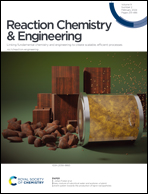Mesoporous CeO2-supported ultrafine PdCu nanoparticle catalyst for selective hydrogenation of alkynols
Abstract
Selective hydrogenation of alkynol compounds to produce high value-added enols is an important reaction in the fine chemical industry. The construction of selective hydrogenation catalysts for alkynols is challenging because the alkynyl group is prone to over hydrogenation and the selectivity in the hydrogenation is always low. Herein, a simple sacrificial template strategy was designed to prepare mesoporous CeO2, on which ultrafine and highly-dispersed bimetallic PdCu nanoparticles were anchored, obtaining the PdCu@CeO2 catalyst. Introducing non-precious metallic Cu can improve the selectivity of precious metal Pd catalysts for the selective hydrogenation of alkynols through electronic and geometric modulation. The obtained PdCu@CeO2 catalyst showed high selectivity (99%) and good recyclability for the selective hydrogenation of the probe compound propynol ethoxylate under mild conditions. The PdCu@CeO2 catalyst also exhibited excellent performance in the catalytic selective hydrogenation of various substituted alkynols. Therefore, this research work provides a feasible strategy for the effective regulation of catalytic performance, which has potential application for the efficient catalytic selective hydrogenation of alkynols in the fine chemical industry.



 Please wait while we load your content...
Please wait while we load your content...